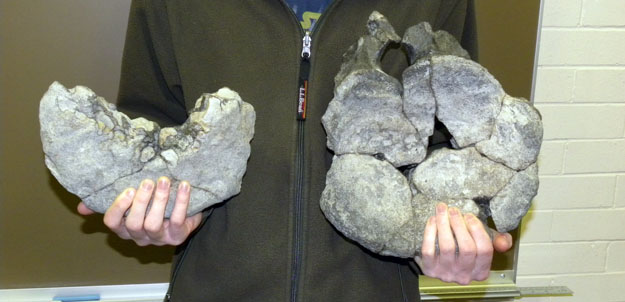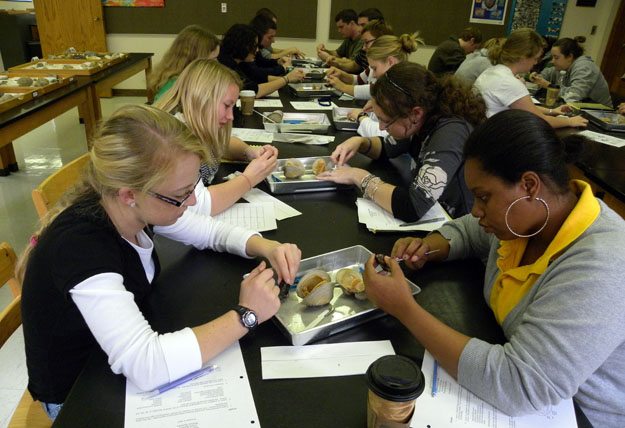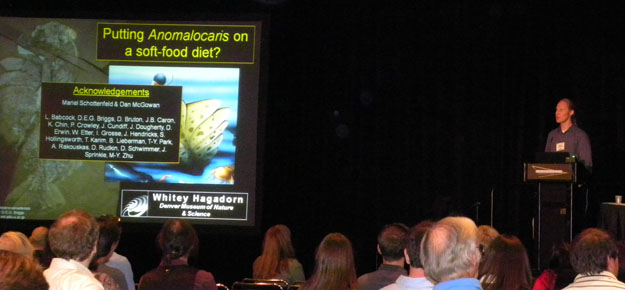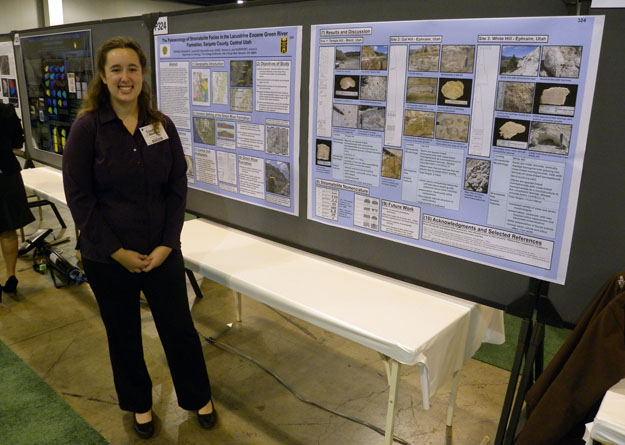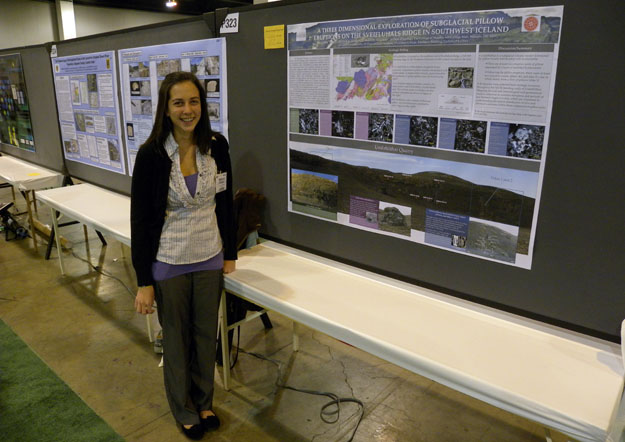WOOSTER, OHIO — Last month we began integrating a large collection of rocks, minerals and fossils into our teaching program in the Department of Geology. These specimens were donated by an Ohio family who lovingly gathered them over decades. They displayed these natural wonders to friends, neighbors and children for their beauty and their educational value. Now we have started to use some of the specimens in our classes.

Invertebrate Paleontology students Sarah Appleton, Megan Innis (the TA), Melissa Torma and Michaela Caventer examine donated bivalve fossils. We are especially impressed with the large articulated Eocene oyster Michaela is holding.



